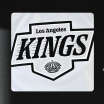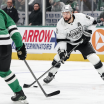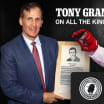The rest, however, could be restored. With the help of the
Mural Conservatory of Los Angeles
and the
's Mural Rescue Program, the remaining seven murals were restored, most in time for the 40th anniversary of the Olympics in 2014.
One of the methods used involves
spraying on a solution which causes a chemical reaction in the latex graffiti paint
, causing it to bubble away from the underlying mural. The bubbling paint can then be power-washed away, revealing the art beneath. Additional touch-ups can be done by hand, and some of the muralists, like Willie Herrón and Judy Baca, have led the restoration of their own murals.
Watch: Youtube Video
Watch: Youtube Video
Now, the Olympics murals are back, and in 2013,
the city reversed a decade-long ban on new murals
, but the overall state of murals remains unresolved. In the few years since the ban was lifted,
the controversial whitewashing of murals continued
, but things are looking brighter.
More murals are being registered with the city
(though red tape still pervades the process), and money is being set aside for conservation and restoration of current murals as well as creation of new work.
Here's to the legacy of a true Angeleno art form. One can only hope that we can reclaim our title-and legacy-as "Mural Capital of the World" as we move further into the 21st century.
For L.A. artists to be taken seriously on a worldwide basis, we have to protect our work and it has to be up for decades, not just in a book. It's about students being able to go and see your work 40 years later - to stand in front of it, live, and look at your brush strokes." -Willie Herrón
If you're curious to take a peek at the Olympics murals-or delve deeper into Los Angeles's mural legacy, the
Mural Conservancy does regular tours
, and the LA Conservancy has a walking tour of the Arts District that includes some murals (though not the Olympic ones). If you'd like to find them yourself,
you can use this map to find those still extant
-or, you can just drive along the 101 and 110 until you spot them.




























